tony gallucci | home
Gulf Coast Laboratory for Wildlife Research | Graptemys | Equus | Rancho Vista Ranch/Wildlife Education Program | Parula Project | Weather | Earthquakes | Dragonfly Days 2004 | Malacological | Fauna Project
Earthquakes
Blog commentary appended at bottom of page.
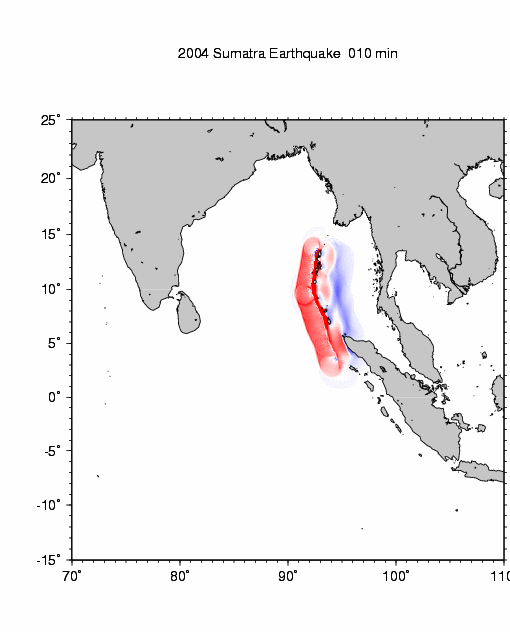
The Tsunami animation
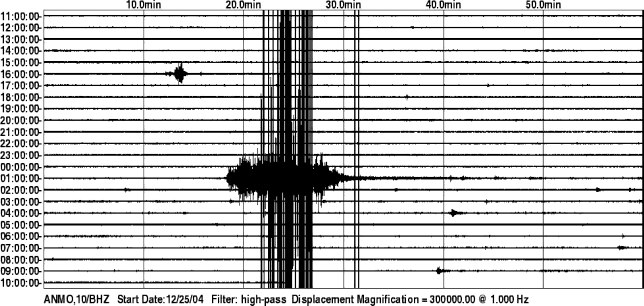
Albuquerque, NM seismograph on Christmas Day 2004
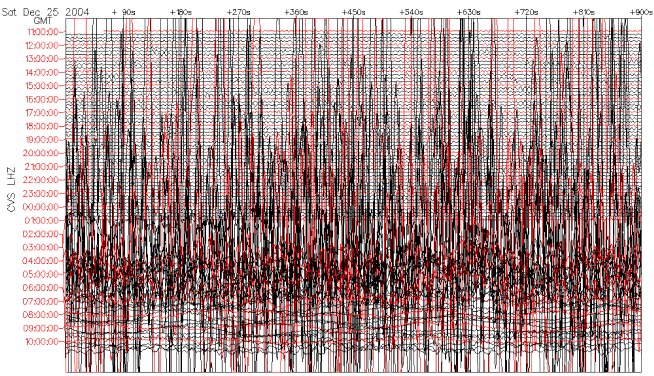
Sonoma, CA Seismograph on Christmas Day 2004
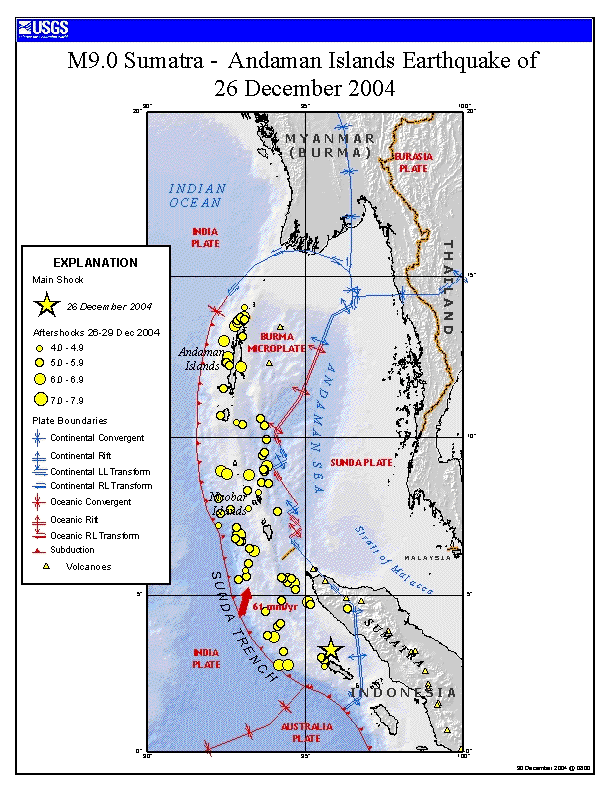
The Great Sumatra Quake of Christmas 2004 (updated version)
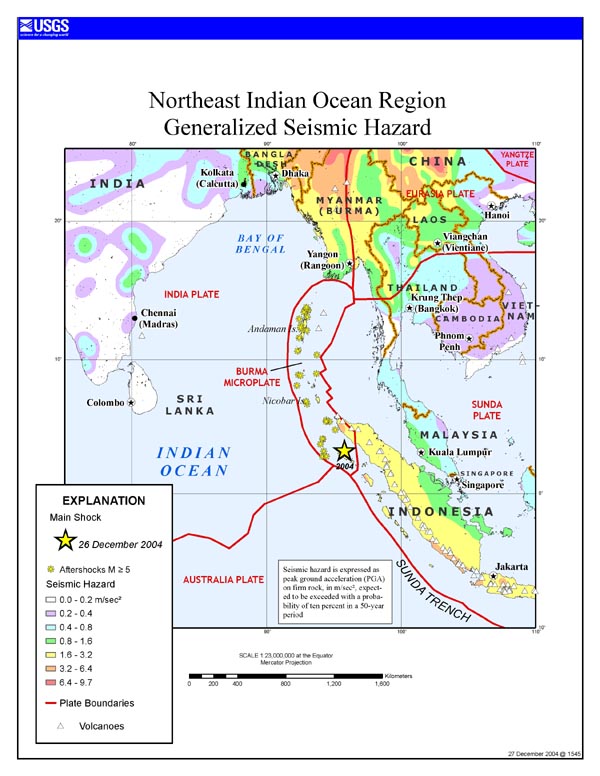
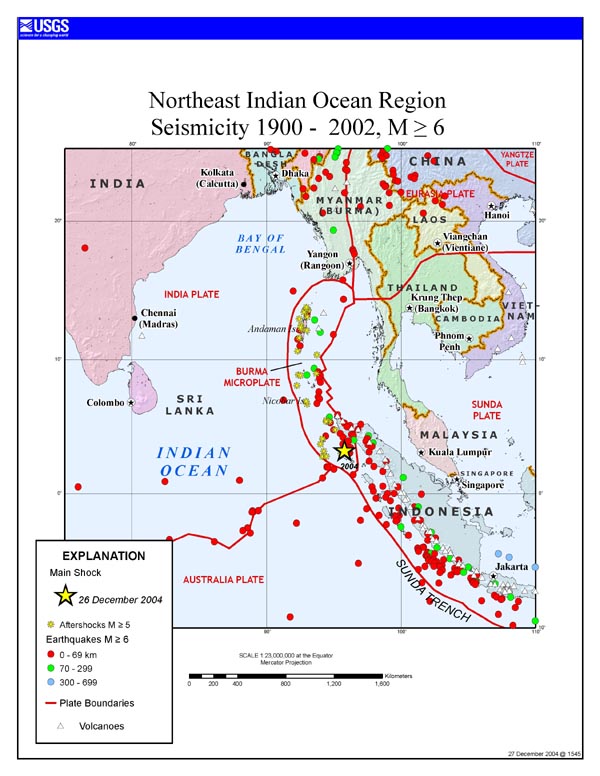
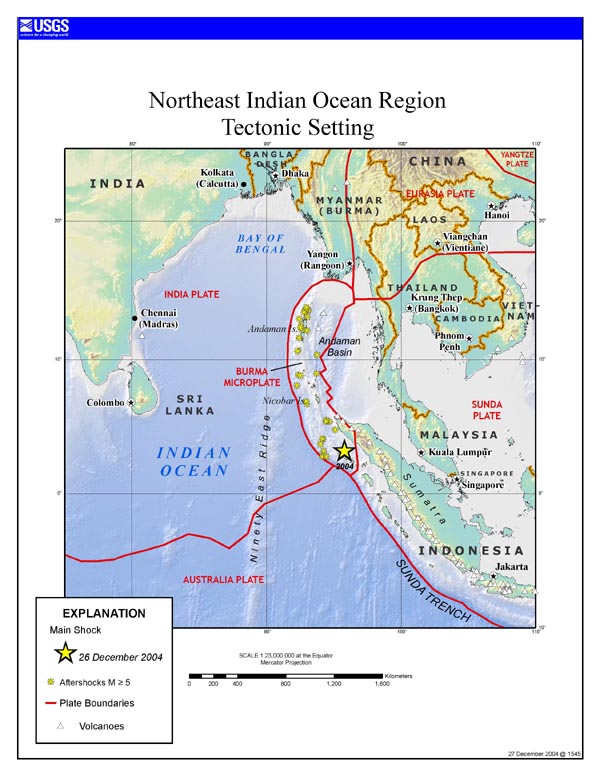
I am posting the next batch in a long string of images. These are seismograms from a Japanese
station. The string starts on December 1st, and each graph represents a full 24-hour period.
As you can see, there are days of relative calm seemingly followed every other day by close
activity. I am trying to identify the major signatures.
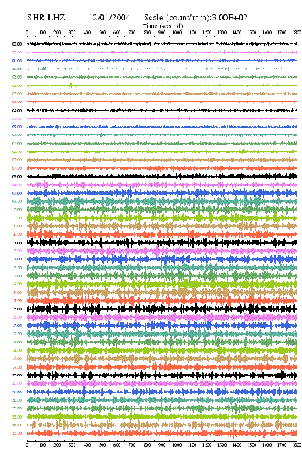
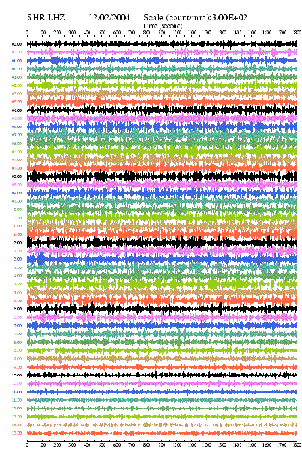
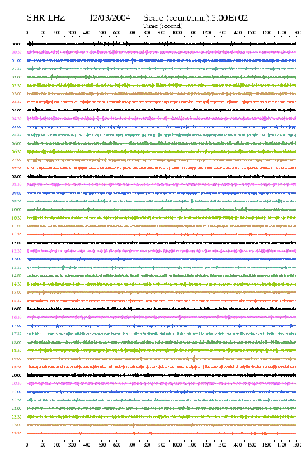
This quiet/shaky kind of pattern fascinates me. You'll see it repeated day after day as you scroll through these.
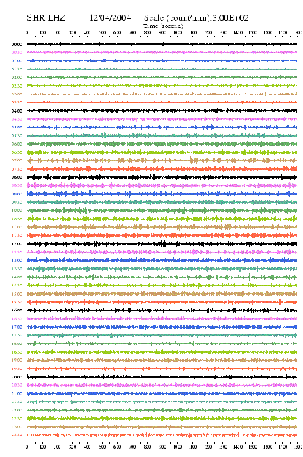
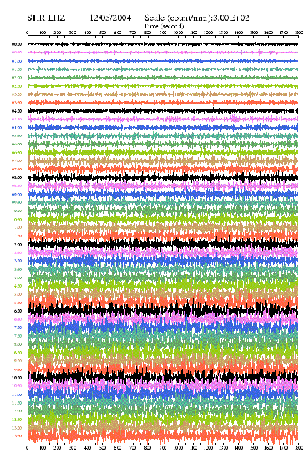
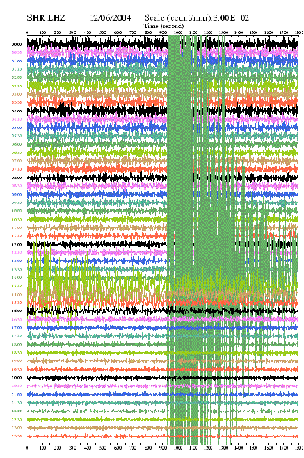
I haven't yet id'ed this quake on the right, but i suspect it is one of the large Hokkaido quakes. It's closeness to the station
can be judged by the intial intensity that fades rather quickly. Update: Hokkaido had a mag6.8 quake on this day (Dec. 6th),
preceded and followed by mag4.4 shocks.
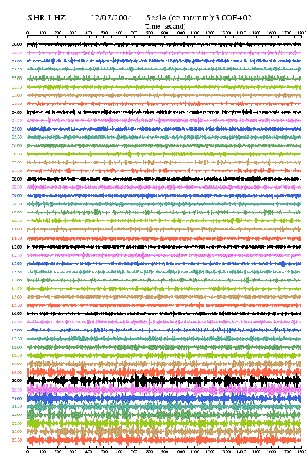
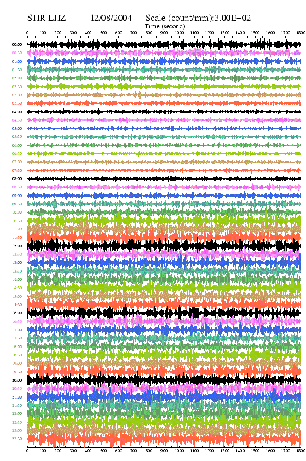
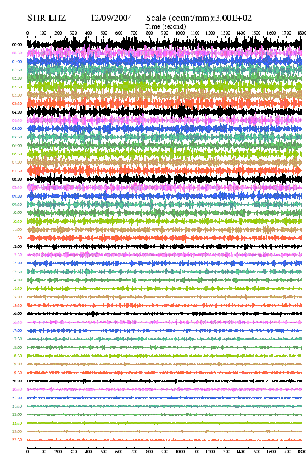
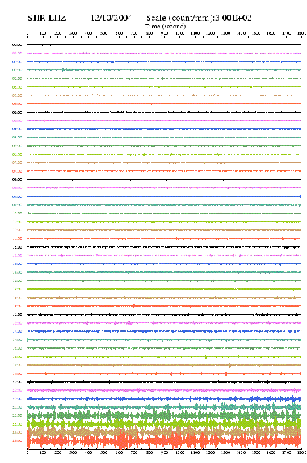
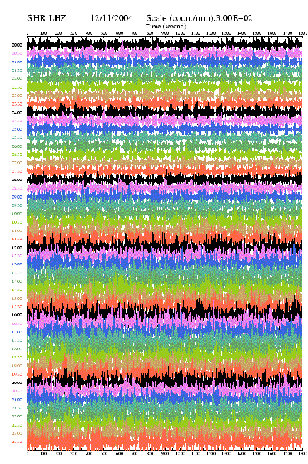
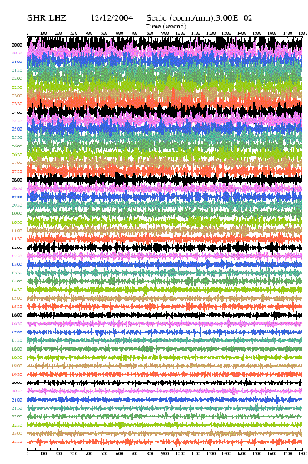
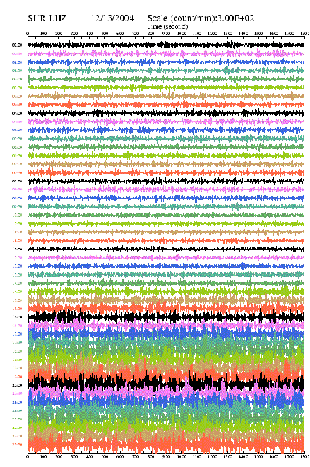
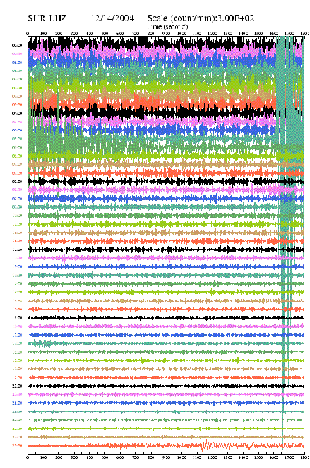
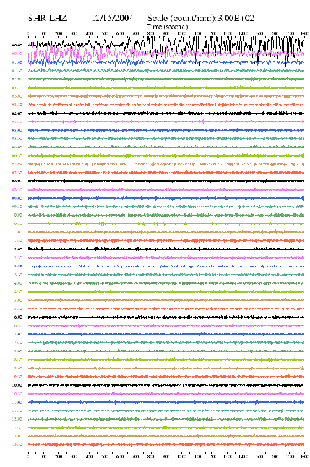
This looks like another Japanese quake in the center. Update: Hokkaido had mag5.8 quake on the 14th, followed
by shocks of 4.8, 4.8 and 4.6 -- i think that's what's showing here.
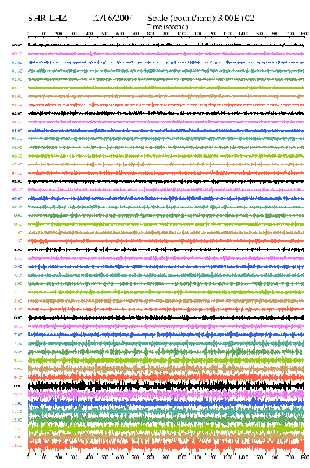
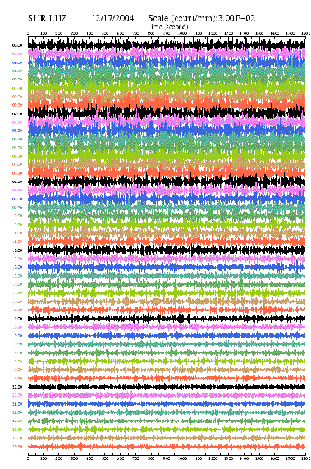
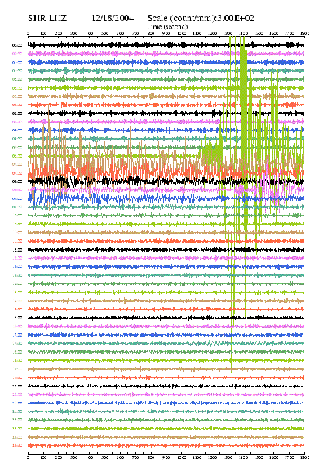
This may be a stronger, more distant quake on the right. Update: There was a mag4.8 and a 4.3 in Japan on this date.
But i suspect this signature is of a mag6.2 off the Kuril Islands.
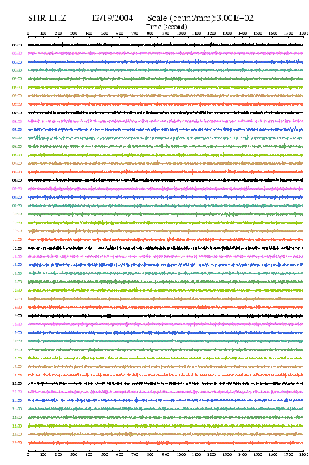
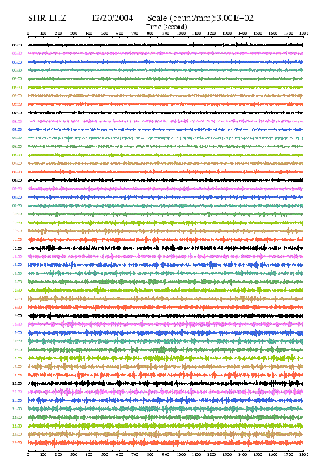
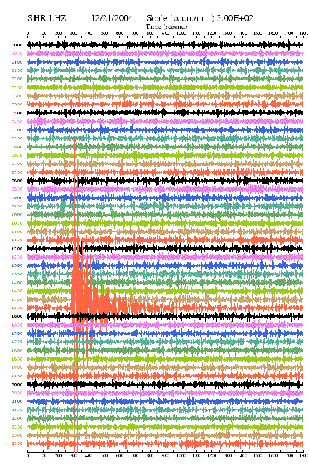
Probably another Japanese quake on the right. Update: This was probably a mag5.6 in Hokkaido.
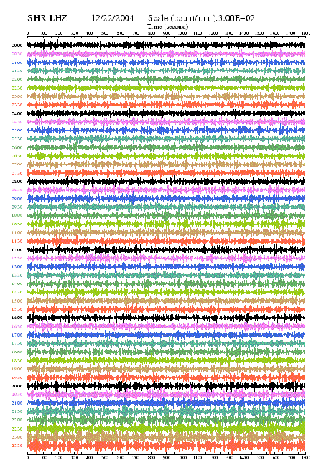
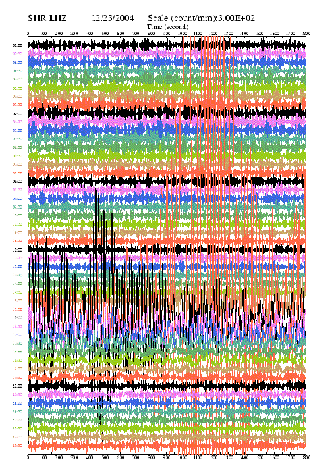
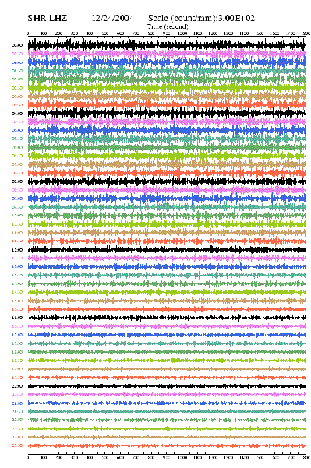
This center graph probably shows the big mag8.1 quake off of MacQuarie Island. There was lots of moderate activity the day before.
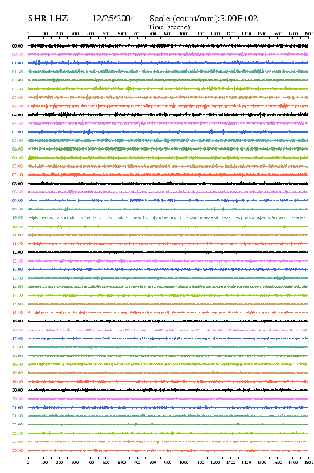
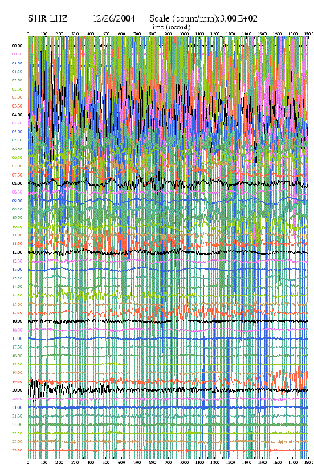
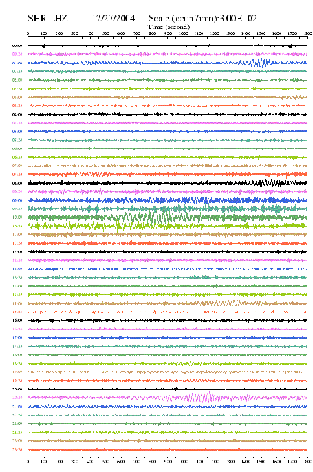
This center graph is the big mag9.0 Sumatra quake and a number of it's more powerful aftershocks. You can see the day before was
relatively quiet for big quakes. The day after shows some more of the more moderate aftershocks. Notice that in the Japanese quake
graphs that there is a period of shakiness prior to the quakes. Yet in this big one, and in the Kuril quake above, they seem to appear
in periods of quiet. I think what we're seeing is that these large quakes at a distance simply aren't registering the shaking seen on the
"closer" Japanese quakes. I imagine a station posted near Sumatra might show plenty of activity; especially since i've noted already
that there were several precursor shocks in the vicinity, none of which seem to show up (much anyway) on these graphs.
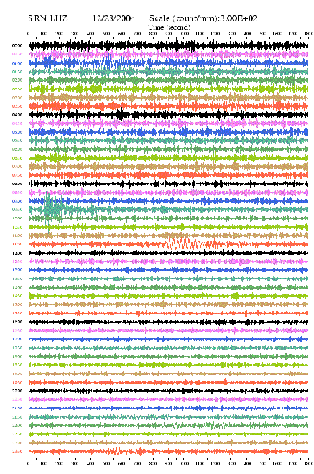
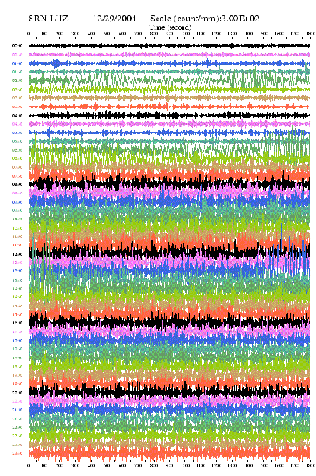
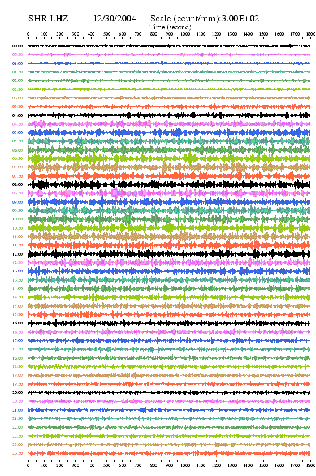
The usual pattern of flip-flopping seismicity continues.
* * * * *
Below is commentary from my blog, which i will probably update only occasionally -- the damage is done.
Thursday, early a.m. Dec. 30 -- 86 shocks now associated with this swarm, many have been added to the data from Dec. 26 and a couple
of days before. The biggest aftershock has been downgraded to mag7.1, which was the original pronouncement.The death toll is up to
80,000 and probably will break 100,000. Reports say there are still areas that have not been looked at in Sumatra, and the Andaman and
Nicobar Islands. Included are a dozen islands which have five paleolithic hunter/gatherer/fishing tribes numbering 300 or less, any of
which might have been completely wiped out in the tsunamis. The continuing heavy shocks must seem like the end of the world to
survivors.
Onge = 95 people
Great Andamanese = 44 people
Jarawa = 300 people
Sentinelese = 100 people
Shompen = 300 people
Nicobarese = ca. 26,000 people
* * * * *
Friday, early a.m. Dec 31 -- death toll just upped to 134,000 after Tamil rebels weighed in. Another mag6.3 shock just hit the region (graphs
below from Kilima Mbogo, Kenya (l) and Taipei (r)-- interestingly a number of the Pacific Rim stations have been down for several days).
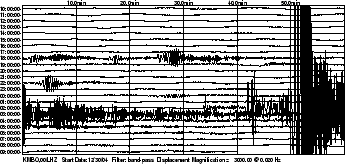
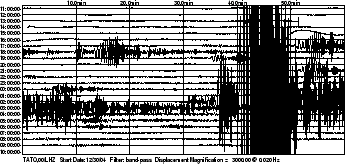
There are now 107 shocks recorded from the swarm. The second largest aftershock has been upgraded to mag6.6.
The largest of the group -- 9.0, 7.1, 6.6, 6.3, 6.3, 6.2, 6.2, 6.2, 6.1, 6.1, 6.1, 6.1, 6.0, 6.0
Travel time for the shockwave to reach New Mexico was ca. 16.4 minutes, and 19.6 minutes to Brownsville.
* * * * *
Saturday, early a.m., Jan 1 -- There were nine more shocks yesterday and so far today, including another mag6.5 and a 6.1.
The death toll is now listed at 150,000. It's long passed being hard to comprehend.
* * * * *
Sunday, early p.m., Jan 2 -- 125 total shocks now listed, another on at mag6.2. Most searches for survivors now called off.
As many as 4000 Sweish tourists may be lost. Death toll in Indonesia now at 100,000.
* * * * *
Monday, December 27, 2004
Quake update
The region is now up to 40 large quakes, death toll 23,000 at this point and will undoubtedly get larger. The second largest quake has been upgraded again to mag7.5.
Still searching for the elusive "good" seismographic snapshot.
Update, evening of Dec. 28th
I assume that the big quake occupied seismologists for quite some time. That's the explanation i'd give for the fact that a series of new quake digests are now being posted, some of them from quakes that actually occurred as precursors to the big quake -- 9 of them so far. The total of moderate to large quakes associated with this swarm is now up to 57 (with five new ones over mag6.0). In addition, more post-quakes from the mag8.1 Macquarie quake have also been posted. Lost in the shuffle and just now posted from the last couple of days are a moderate California quake, a moderate Chiapas quake and a small (mag3.0) quake in Tennessee.
On the ugly side are the ever-increasing numbers of dead -- 56,000 confirmed at this point, and i've seen a new estimate of 100,000. Ghastly and maddeningly sad.
posted by tony g at 11:54:25 PM
Quake bad, not this bad
Okay, this quote was on CNN two hours ago.
"Some of the tsunamis reached as far as 1,600 kilometers (91,000 miles) from the epicenter of the 9.0 magnitude quake, which was located about 160 kilometers (100 miles) off the coast of Indonesia's Sumatra Island at a depth of about 10 kilometers (6.2 miles)."
I notified them about the math error -- the one where the tsunamis race around the earth almost four times -- but who knows if they got the message. In any case, there is an updated story with the same error repeated. The correct assessment of course, is more like 960 miles.
As an afterhtought i guess the tsunami didn't necessarily have to go around the earth but might have been launched instead towards the moon, which means it would arrive there in another day and a half at that rate. Moon look out!
Update: I got an email from CNN thanking me for correcting the error. I imagine the article was long gone by then anyway, but interesting that i should get an acknowledgment.
"Thank you for taking time to bring this error to our attention. We will forward it to the Webmaster so it can be checked into and resolved. Thanks again for your interest. Sincerely, CNN Public Information"
posted by tony g at 3:01:36 AM
Earthquake graphics
These are all now posted above.
posted by tony g at 1:02:45 AM
* * * * *
Sunday, December 26, 2004
Helpless
Sometimes i wonder if it would be Christmas without some huge disaster or sadness (see Bam Earthquake 2003).
I have this particular fascination with natural disasters. We won't go into explanations now. Let's just say that i am particularly fascinated by earthquakes, and because of that have developed a connection or two, and am linked to the USGS earthquake info center. I get alerts when any sizable quake occurs around the world, and within minutes. By sizable that usually means a mag5 or greater. Last week there was an 8.1 between Australia and Antarctica, and i immediately knew that it would be the largest in the world this year (i stay up to date see). Anyway, it's remoteness meant there would be little noticeable effect and so it turned out.
I work nights right now, editing film. Last night i was working when the flash came across about the Sumatra quake. By my calculations, i knew within 5 minutes of its being recorded on US seismographs, which would have been some little while after the actual quake. I suspect the warning system works a bit faster on really big quakes because it needs to stir certain people to action. Because of that, the original warning post listed this one at 8.5, since revised upwards twice -- to 8.9 and then 9.0 (as everyone knows by now, the biggest since the Alaskan mag9.2 in 1964 -- the one that got me interested via National Geographic coverage).
My immediate thought was that this was a huge quake, even at 8.5, and knowing the rough location i also knew that developing tsunamis oculd be trouble. My first move was to hit the EIS site to look at details and to follow links to the tsunami warning system. On doing that i found that the two major systems, both Pacific, declared no danger, and no warnings were put into effect. There are no Indian Ocean systems. Of course, the Pacific system was right, because of the location of the quake, there was no danger to Pacific beaches, even though the site is part of the Pacific "ring of fire". The warnings did mention the possibility of tsunamis near the epicenter.
From there i started looking for SE Asian news reports. It took an hour for one to be posted, and that from Aceh, where the first report had nine killed. For a couple of hours that was the fatality total. I had a gut feeling that huge devastation was on the way, and here i am in podunk Texas with no way to warn anyone. It was as helpless a feeling as i've had since 9/11, watching the first tower in flames, then watching plane two approach, and then watching as people and then the buildings came crashing down. These are the only two such times in my life i've felt quite like this. That may be an artifact of the instant information age. I wonder how many will feel the sadness of this event in the same way, since it's both a natural disaster, and unattached to the red, white and blue.
I watched as over the hours the earthquake notices piled up in my email. One after another (and there's been almost zero mention of this in the news, though you hear talk of aftershocks), the tremors are pounding the area. At this writing i count 29 (updated) different quakes over 5.4mag. Any of those would kill and do damage in a populated area. In fact there was another quake (mag7.1; update, this one later upgraded to 7.3) in this swarm larger than the Bam, Iran quake of Christmas 2003 which killed 30,000 (none from tsunamis by the way; and which, at mag6.6, was far from the strongest quake of the year which was a mag8.3 in Hokkaido Japan with no recorded fatalities, and which place has been hammered by quakes in 2004 as well). In addition there have been quakes (aftershocks) measuring 6.5, 6.3, 6.2, 6.2, 6.1, 6.1, 6.0, 6.0, and 6.0, with the rest (in warning reports) measuring between 5.4 and 5.9. There are, of course, hundreds perhaps thousands more smaller shocks going on across the region.
Without tying this in to religion or anything like that, the period from Dec 24 to Dec 28 seems to me a very active period for quakes. Besides today's and the Bam quake it includes a 1939 Turkey quake that killed 32,000 (mag7.8) and a 1908 Italy quake that killed 70,000 (mag7.2). Off the top of my head i wonder if has to do with day length and extreme planet tilt, and perhaps lunar gravitation. While it's the period of the shortest day of the year for us, it is the longest in the Indian Ocean. Perhaps there is another swarm date around late June. Maybe i'll check it out. Perhaps i'm just blinded by current events and there is no tendency for particular dates. Someone need a graduate Geophysics project?
Anyway, very sad day. Besides the lives lost, many thousands of people are starting lives all over again today.
I will be sending an interesting graphic in a minute that shows the fault line, nearly 1000km in length; and some graphics from seismometers that i monitor.
Here is a link to a fascinating animated gif showing the tsunami progress from the National Institute of Advanced Industrial Science and Technology in Japan (you'll need a high-speed connection for this i think; and it is hard to reach i imagine because of interest in it -- i will try to download and post it as soon as i can on my webpage).
http://staff.aist.go.jp/kenji.satake/animation.gif
posted by tony g at 11:12:45 PM